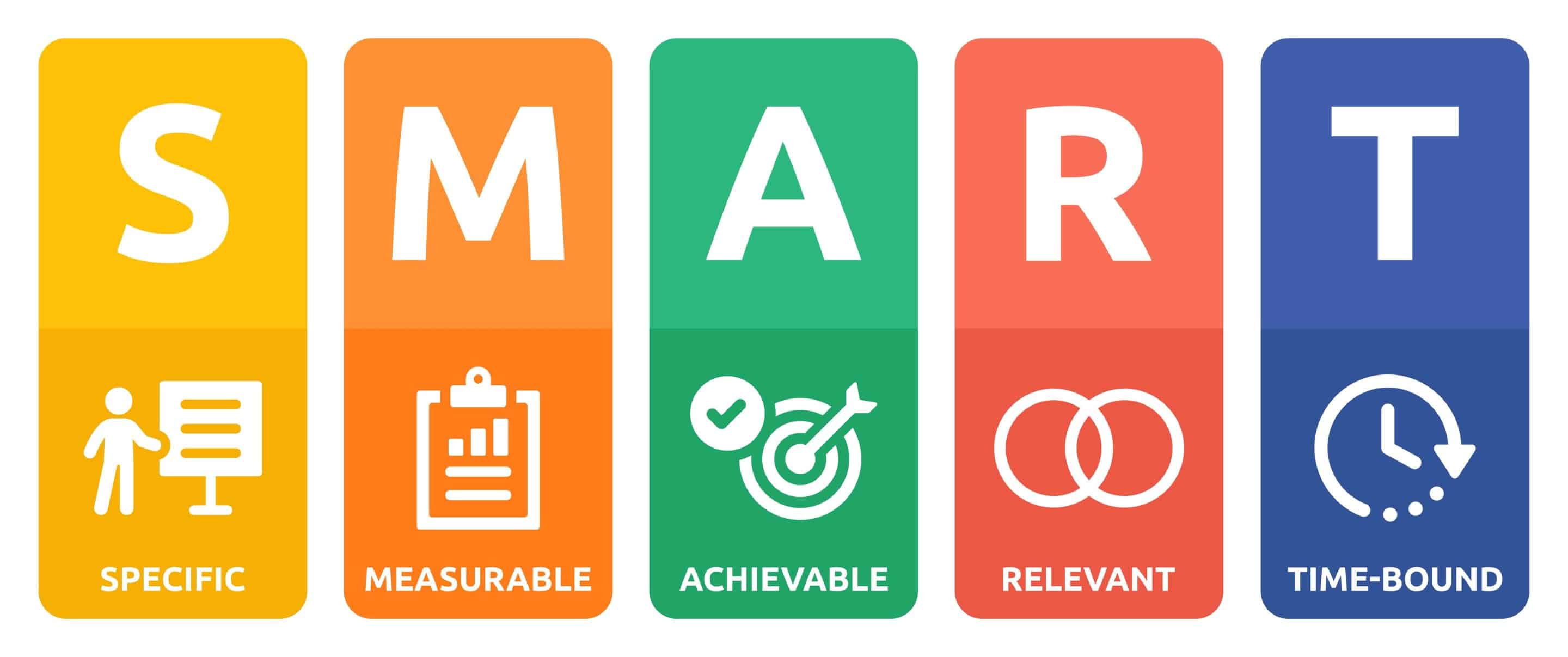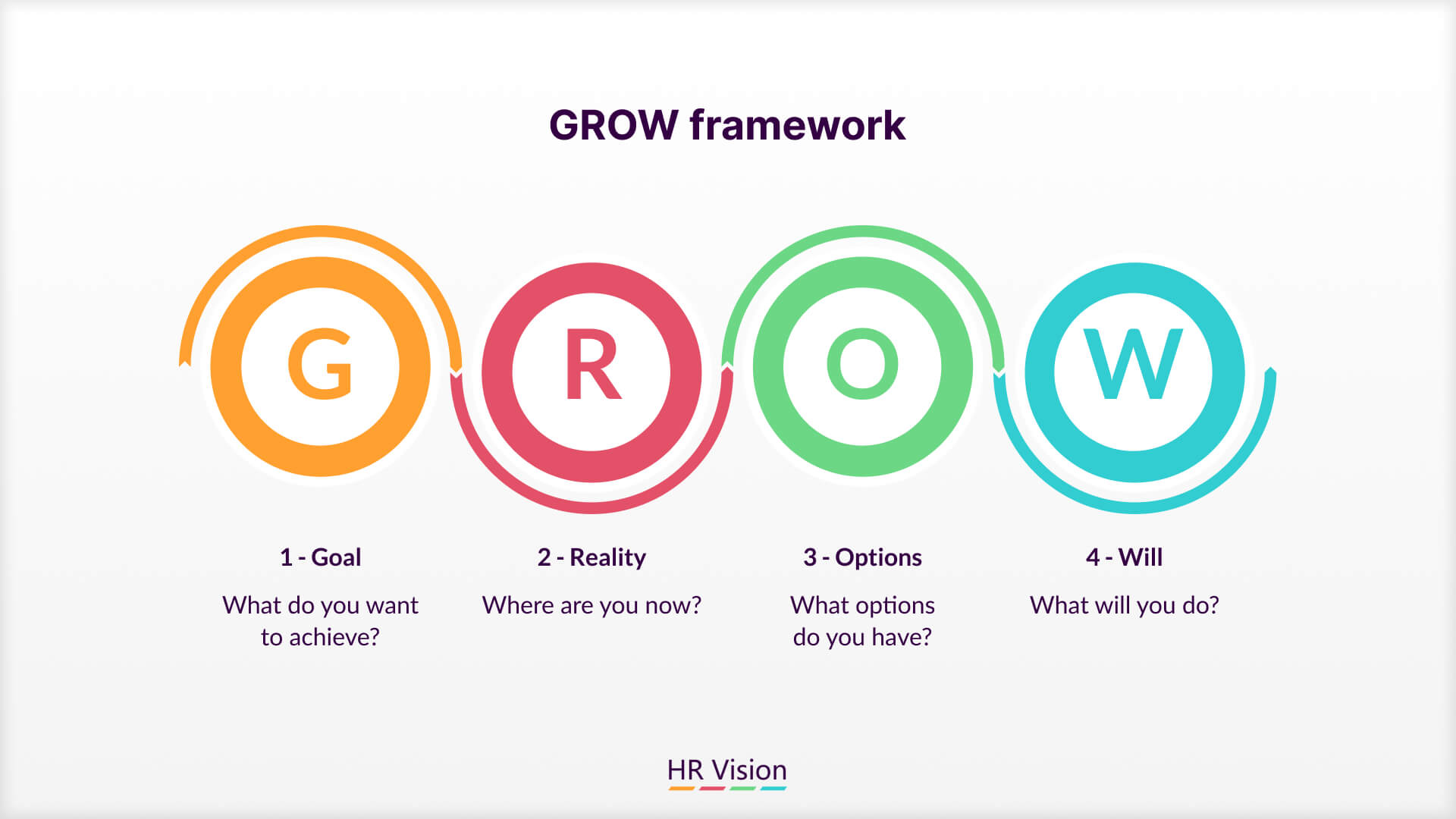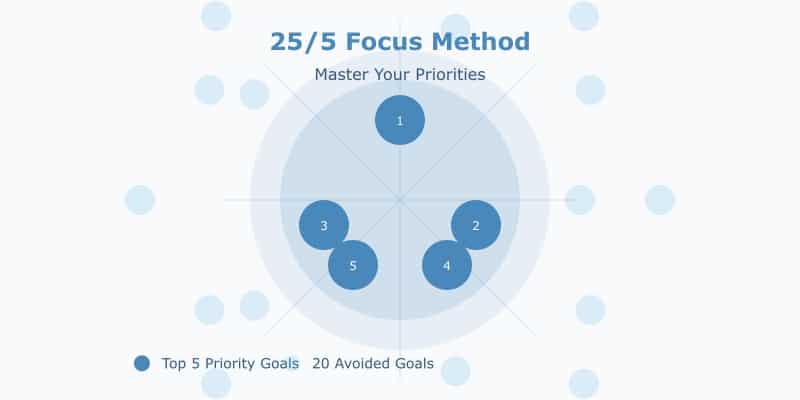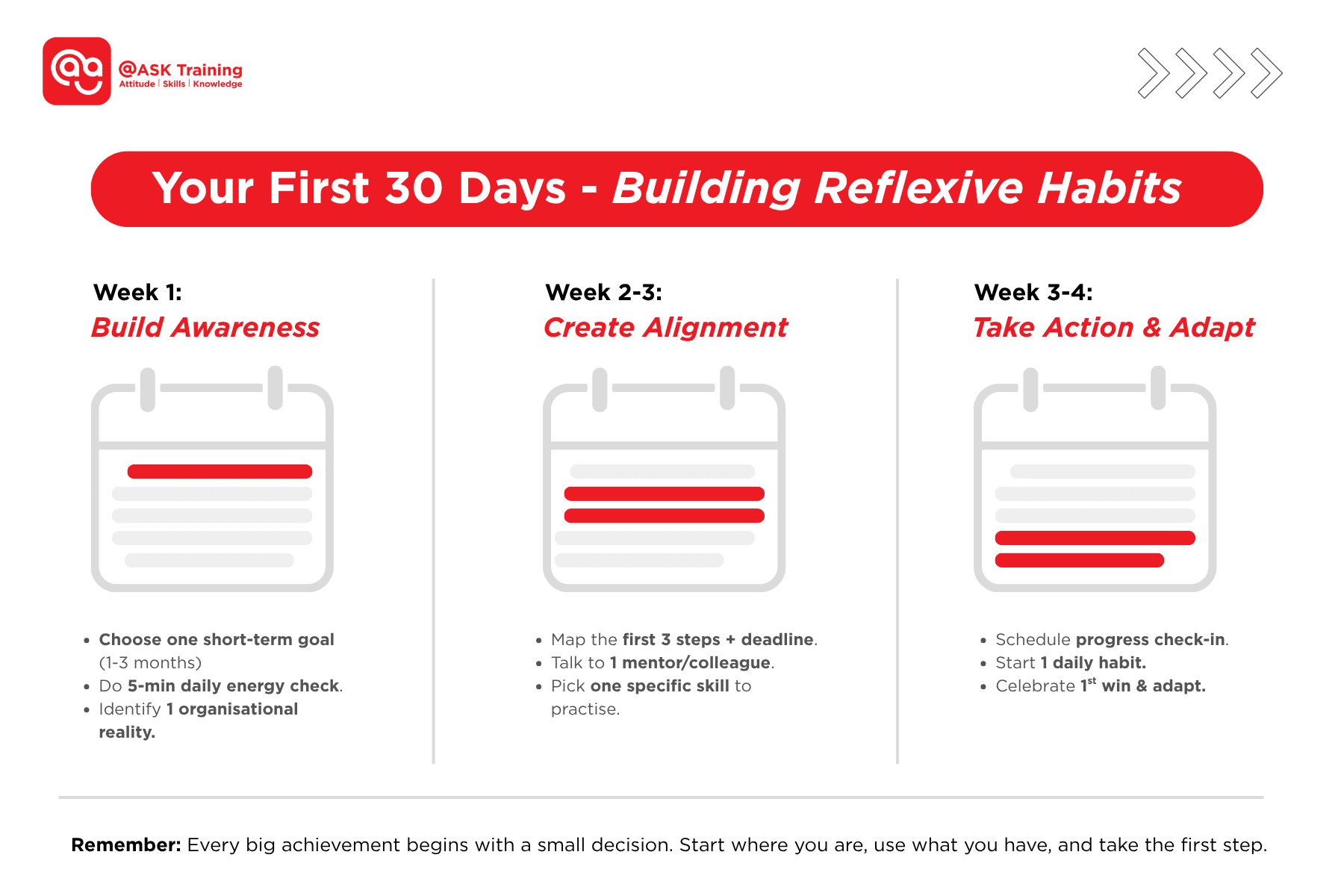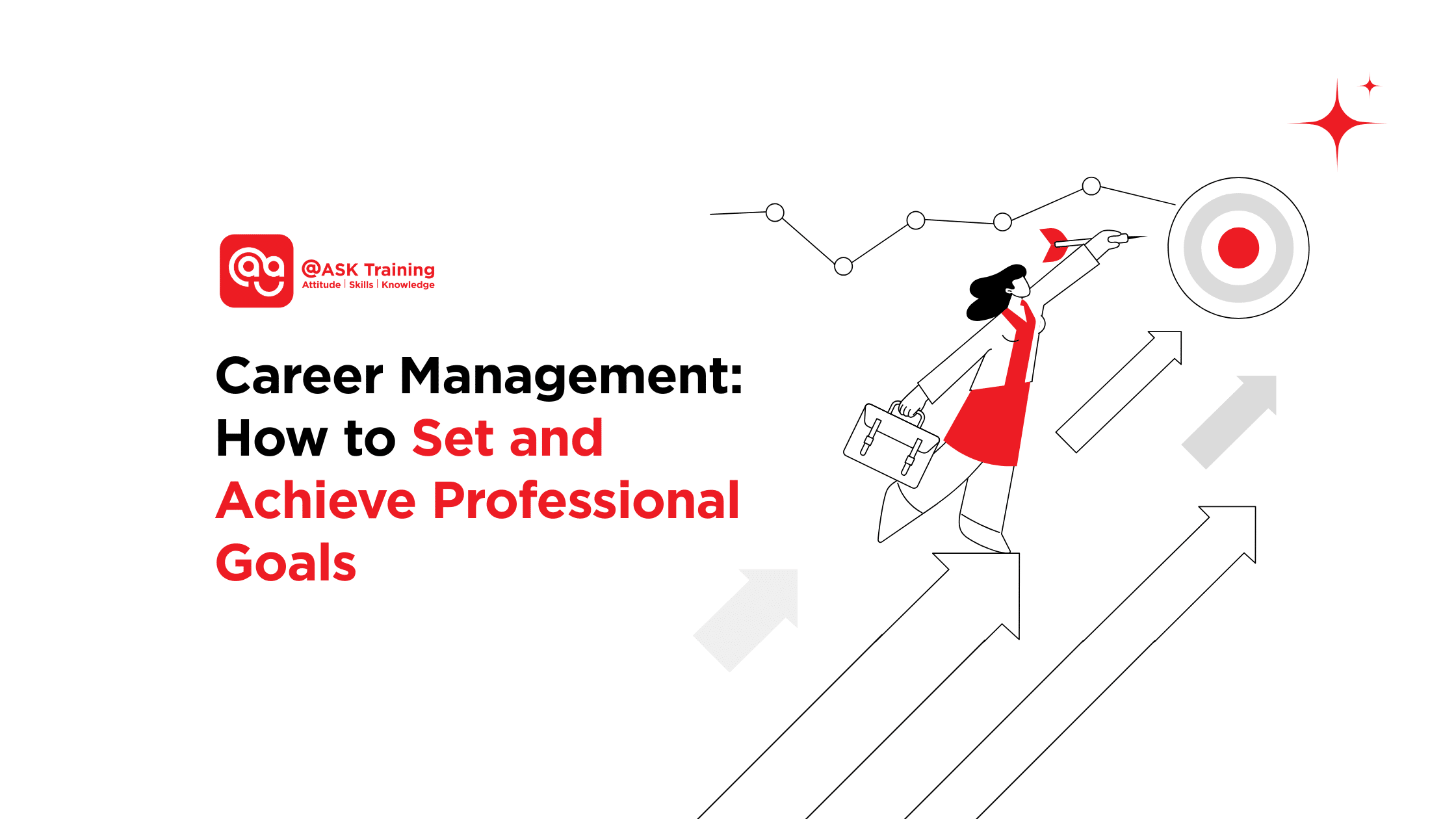
Career management is more than climbing the corporate ladder; it’s about intentionally designing a professional life that aligns with your skills, passions, and long-term vision.
It starts with setting professional goals and building an actionable career development plan that guides your growth.
When you learn how to set career goals strategically, you transform vague ambitions into a clear path forward. This process brings focus, clarity, and the momentum needed to move from where you are to where you want to be.
This guide will help you:
- Set meaningful goals using proven frameworks like SMART and GROW.
- Build a practical career action plan to turn objectives into results.
- Develop strategies to stay adaptable and on track, even when circumstances change.
Let’s begin!
Why Setting Career Goals Matters
Feeling stuck or unsure about your next step is a common experience. Without a target, it’s easy to drift through your career, reacting to whatever comes your way.
This is where setting professional goals changes the game. It’s not about rigid five-year plans; it’s about creating a sense of direction that makes your daily work more intentional and fulfilling.
Think of goals as your personal compass. Here’s how they provide clarity:
1. Cuts Through the Noise
When you know exactly what you’re working toward, it’s easier to decide what deserves your energy today.
A clear goal helps you prioritise and fend off distraction, giving you a sense of purpose, especially on those days when motivation is hard to find. Instead of just “working hard,” you’ll be working toward something tangible.
2. Simplifies Tough Choices
Should you take on that project, switch industries, or invest in a course? Defined goals act like a filter.
You can quickly ask, “Will this get me closer to where I want to be?” If the answer is no, it’s easier to say no, freeing you up for the opportunities that truly matter.
3. Helps Others Help You
Managers and mentors want to support people who know what they want. When you can articulate your goals, it shows initiative.
It makes it easy for them to offer you the right opportunities, advice, and advocacy because they understand your direction.
4. Protects Your Time
Goals stop you from spinning your wheels on “busywork.” They shift you from vague intentions to actionable plans.
For example, instead of just “get better at marketing,” a specific goal like “complete a digital marketing certification by Q4” ensures the time you invest actually moves forward.
5. Builds Momentum Through Small Wins
Progress is the best motivator. Checking off small milestones builds confidence and creates positive momentum.
Over time, these accomplishments add up, transforming uncertainty into tangible career satisfaction and growth.
As career coach Brian Tracy once said, “Goals are the roadmap to your professional life.” By defining yours, you stop leaving your career to chance and start actively building it.
Now that we’ve seen how goals provide clarity, let’s look at the different types of goals you can set to build your own path.
That’s where a simple structure comes in. Frameworks like SMART, GROW, and the 25/5 Rule help you create goals that are specific, achievable, and trackable, while avoiding common pitfalls like vagueness or over-commitment.
Types of Professional Goals
When you think about professional goals, it’s easy to imagine only the big, distant milestones.
But effective career management is actually about blending different types of goals — the immediate steps that build momentum and the larger visions that give you direction.
Let’s break down the options so you can build a plan that feels both ambitious and achievable.
Most goals fall into one of two timeframes:
- Short-term (next few months): These are your quick wins. They build confidence and keep you moving forward.
- Long-term (1–5 years): These are your bigger aspirations. They require more planning and persistence, but keep your career moving in a clear direction.
Short-Term Goals
These are immediate objectives that help you gain quick wins and build momentum. Short-term goals often act as stepping stones to bigger ambitions.
- Example: “Learn how to use advanced features in PowerPoint to create more professional presentations within the next month.”
- Why it helps: Checking a small goal off your list boosts confidence and makes your progress visible to managers and peers, which can lead to new opportunities.
Long-Term Goals
These are the “big picture” outcomes you want to achieve over several years. They require adaptability while preventing you from drifting without purpose.
- Example: “Transition into a leadership role within 2 years.”
- Why it helps: This big-picture vision acts as a filter for your decisions, helping you choose the right projects and skills to learn along the way.
Balance-Focused Goals
A rewarding career isn’t just about promotions and paychecks. Goals that protect your well-being are crucial for avoiding burnout and finding lasting fulfilment.
- Example: “Stop checking work emails on weekends starting next quarter.”
- Why it helps: Sustainable success requires a healthy balance. Setting these boundaries ensures your career growth doesn’t come at the cost of your personal life.
What Kind of Goals Should You Set?
You can set goals in many areas. Mixing and matching from these categories creates a well-rounded career development plan.
1. Skills Development
You don’t have to tackle everything at once. Think of building skills in three manageable tiers:
Foundational (Early Career: 0–5 years)
- Build your professional credibility. Strengthen core abilities like Excel, email writing, or active listening in meetings.
- These are small but impactful, especially for early-career professionals.
Intermediate (Mid-Career: 5–15 years)
- Expand your influence. Level up with skills like project management basics, effective presentation skills, or mentoring junior colleagues.
- Focus on abilities that increase your impact across teams and departments.
Advanced (Established Professionals)
- Drive strategic impact. Commit to bigger milestones such as earning a professional certification, mastering leadership capabilities, or gaining fluency in a second language.
- These are long-term investments that shape career direction.
Reality Check: Before diving in, ask: Does my workplace actually value and reward these skills? Are there visible examples of people advancing through similar development paths?
Daily Growth Practice: Ask yourself: What skill did I practice today that makes me a better version of my professional self?
The key is to select the level of skills development that matches your current career stage and long-term aspirations. This way, growth feels achievable rather than overwhelming.
2. Certifications and Qualifications
Earning professional credentials like Project Management Professional (PMP), Chartered Financial Analyst (CFA), or industry-specific certifications can boost credibility and open doors to higher-level roles.
3. Career Advancement
These include promotions, leadership roles, or new responsibilities that expand your scope and impact. Advancement goals usually combine skill-building with relationship-building.
4. Salary or Financial Benchmarks
It’s okay to be specific about what you want to earn. Setting a tangible income goal (e.g., “Increase annual salary by 20% in three years”) helps you measure success and ensures your efforts are financially rewarding.
5. Work-Life Balance
Goals here protect your energy. This could mean negotiating a hybrid work arrangement, setting strict boundaries on after-hours communication, or simply using all your vacation days. Your well-being is a critical component of your career management strategy.
6. Professional Networking
Building and nurturing a strong professional network is often overlooked but vital. Networking goals might include attending two industry events per quarter, finding a mentor, or joining a professional association.
Key Takeaway
The best strategy is a blend. Pair a demanding skills goal (“Complete a Cybersecurity course”) with a balance goal (“Leave the office by 6 PM every day”). This builds a career that is not only successful but also sustainable and fulfilling.
Now that you know what kinds of goals to set, let’s look at some proven frameworks to help you structure them effectively.
Frameworks for Effective Goal Setting
Knowing you should set goals is one thing; knowing how to do so is another. It’s easy to end up with a vague idea that feels more overwhelming than helpful.
That’s where a simple structure comes in. Frameworks like SMART, GROW, and the 25/5 Rule help you create goals that are specific, achievable, and trackable, while avoiding common pitfalls like vagueness or over-commitment.
1. SMART Goals: Your Goal-Setting Blueprint
The SMART framework is a classic for a reason: it turns a fuzzy wish into a clear target. It ensures your goal is:
- Specific: Exactly what do you want to accomplish?
- Measurable: How will you track your progress?
- Achievable: Is this realistic with your current resources?
- Relevant: Does this align with your larger professional goals?
- Time-bound: What is your deadline?
Example:
- Vague Goal: “I want to get better at digital marketing.”
- SMART Goal: “Complete my WSQ Specialist Diploma in Digital Marketing by December 2025.”
This goal works because it’s clear (WSQ Specialist Diploma), trackable (coursework and exam), realistic (assuming you have some experience), relevant for leadership roles, and has a firm deadline.
Real-World Scenario:
A marketing coordinator wants to move into a management role and sets a SMART goal: “Lead a social media campaign independently within 3 months and present results to senior management.”
This gives them a clear finish line, a way to measure success, and a deadline to work toward, making it much easier to get started.
“Goals are dreams with deadlines.” – Diana Scharf Hunt
2. The GROW Model: Your Thinking Partner
If SMART is your blueprint, the GROW model is your coaching session. It’s a simple set of questions to help you think through your goal from every angle, especially useful when you feel stuck.
- Goal: What do you really want to achieve?
- Reality: Where are you right now? What skills or experience do you already have?
- Obstacles/Options: What might prevent you from reaching the goal? What options are available?
- Way Forward: What steps will you commit to, and by when?
Real-World Scenario:
A customer service representative wants to transition into social media marketing. Using the GROW model:
- Goal: Land an entry-level social media executive role within the next year.
- Reality: I have no professional experience in marketing, but I have deep knowledge of our customers’ needs and frequently use social platforms personally.
- Options: Volunteer to manage my current company’s LinkedIn page, complete a Social Media Marketing course, build a small portfolio for a local non-profit, and network with marketers on LinkedIn.
- Way Forward: This month, I will complete the first module of the certification and draft a proposal for my boss on how I can help with our company’s LinkedIn.
This model helps you break down a daunting goal into a logical, less intimidating plan.
“The best way to predict the future is to create it.” – Peter Drucker
3. The 25/5 Rule
The 25/5 Rule, popularised by Warren Buffett, is a prioritisation technique designed to focus on what matters most.
The rule is simple:
- List your top 25 career goals (short-term, long-term, skills, networking, etc.).
- Highlight your top 5 goals that are the most urgent or impactful.
- Focus on these top 5 only.
- The other 20 become an “avoid-at-all-costs” list until you’ve made significant progress.
Real-World Scenario:
An early-career designer lists 25 career goals, ranging from learning new software, attending workshops, to expanding their portfolio. After prioritising, the designer identifies the top 5:
- Mastering Adobe Illustrator
- Completing a client project independently
- Attending a networking event
- Updating the portfolio
- Securing mentorship
By focusing on these, the designer makes measurable progress without feeling overwhelmed.
“The difference between successful people and very successful people is that very successful people say ‘no’ to almost everything.” – Warren Buffett
Applying Goal-Setting Frameworks in Real Life
To make career management tangible, let’s look at how a single professional can apply different goal-setting frameworks, prioritise objectives, and structure an action plan.
The table below shows a marketing coordinator’s journey from setting a SMART goal to staying on track and adapting as circumstances change.
| Step / Framework | Example for Marketing Coordinator | Explanation/Outcome |
|---|---|---|
| SMART Goal | Lead a social media campaign independently within 3 months and present results to senior management. | Clear, measurable, and time-bound goal; builds leadership and visibility. |
| GROW Model | Goal: Lead the campaign this quarter. Reality: No prior independent project leadership experience. Options: Volunteer for small tasks within the campaign, take an online project management course, seek mentor guidance. Way Forward: Plan tasks weekly, schedule mentor check-ins, track milestones. |
Breaks down challenges and actionable steps; identifies support and resources. |
| 25/5 Rule | Lists 25 career goals and selects top 5 to focus on, including leading the campaign and completing a digital marketing course. | Helps prioritise efforts and avoid being overwhelmed; keeps focus on high-impact goals. |
| Career Action Plan | Goal: Lead the social media campaign. Steps: Shadow team lead, plan timeline, propose strategy, execute, present results. Timeline: 3 months. Resources: Mentor, online course, manager feedback. Milestones/Rewards: Submit proposal, launch campaign, receive recognition. |
Converts the goal into concrete, trackable steps with deadlines and support. |
| Staying on Track & Adapting | Reviews plan monthly, adjusts tasks if project scope changes, tracks progress, seeks mentor feedback, celebrates milestones. | Ensures accountability, flexibility, and motivation; normalises learning from setbacks. |
Each of these frameworks gives you a different way to tackle the same challenge: moving from ambition to action. With a goal clearly defined, the next step is to build your personalised career action plan to make it happen.
Structuring a Career Action Plan
A career action plan is the bridge between your goals and actual progress. It turns aspirations into concrete steps, helping you stay organised, motivated, and accountable.
This is how you make career management feel less overwhelming and more like a project you can confidently manage.
Let’s build your plan, one step at a time.
Step 1: Start with Values and Reality Alignment
Before you plot your course, it’s essential to know your starting point. This means taking an honest look at your strengths, what you value in a job, what you’re passionate about, and the type of work environment where you thrive.
Setting goals that align with who you are is the key to staying motivated for the long haul.
Before planning, assess both internal drivers and external realities.
Daily Reflection Practice:
- What activities made me feel energised today?
- When did I feel most aligned with my values?
- What organisational constraints do I need to acknowledge?
- How can I make tomorrow 1% better than today?
Organisational Reality Assessment:
- What skills are actually rewarded here?
- Are there visible examples of internal career progression?
- What support exists for professional development?
- What are the real promotion criteria?
Example: A junior marketing specialist identifies strengths in digital content creation and enjoys collaborative environments. They also realise they prefer creative problem-solving over repetitive tasks.
The Results: This self-awareness helps them focus their career development plan on roles that leverage their creativity and teamwork, rather than applying for every open job.
Step 2: Do Your Research
Once you have a sense of direction, it’s time to explore the landscape. What skills are in demand? What does a typical career path look like? This step is about reducing uncertainty by gathering real-world intel.
How To Do It: Talk to people who have the job you want. Investigate your industry, job market, and possible career paths. This includes seeking mentors, conducting informational interviews, or participating in internships or cross-department projects.
Example: A software engineer interested in product management researches typical career paths, talks to current product managers, and volunteers to assist in small product initiatives within their company. This helps them gain insights into required skills and experience.
Step 3: Break It Down
Long-term goals can feel overwhelming. Breaking them into smaller, achievable steps creates momentum and ensures steady progress.
Example:
Long-term goal: “Become a project lead within 18 months.”
Short-term steps:
- Complete an online project management course in 3 months.
- Volunteer to lead a small internal project in 6 months.
- Present project outcomes to senior management within 9 months.
By following these milestones, the professional can see tangible progress while steadily moving toward the ultimate goal.
Step 4: Document Your Career Action Plan
Writing down your plan makes it easier to track progress and hold yourself accountable.
A simple action plan template might include:
| Goal | Required Steps | Timeline/Deadline | Resources/Support Needed | Milestones/Rewards |
|---|---|---|---|---|
| Lead a small team project | Take project management course; volunteer for project | 3–6 months | Online course, mentor guidance | Present outcomes; celebrate completion |
| Improve public speaking | Deliver team presentation once per month | Next 3 months | Feedback from manager | Record presentation, reflect on improvements |
| Expand professional network | Attend 2 industry events per quarter | 12 months | Event registration, LinkedIn connections | Connect with 5 new contacts per event |
Step 5: Review and Adjust
Your interests and the market will change — and your plan should too. A career action plan is a living document, not carved in stone.
Regularly reviewing and adjusting your plan ensures it stays aligned with your evolving goals, interests, and market conditions. Ask yourself: “Is this still working?” or “Is this still what I want?”
Example: A software engineer initially aimed to transition into product management within a year, but realised after 6 months that they enjoyed user experience design more. That’s not a failure — it’s valuable feedback! They adapted their plan to include UX courses, mentorship, and hands-on UX projects instead.
Key Takeaways
- Start with self-assessment to ensure your plan aligns with strengths and values.
- Research your industry and leverage mentors for guidance.
- Break down long-term goals into achievable short-term tasks.
- Document everything — steps, deadlines, resources, and milestones.
- Review and adjust regularly to stay flexible and motivated.
A well-structured career action plan transforms career management from abstract ambition into tangible, measurable progress.
Next, let’s talk about how to stay on track and adapt when things inevitably change.
Staying on Track & Adapting
Creating a career action plan is just the beginning. The real challenge is following through. Life gets busy, priorities shift, and motivation can dip.
The key to lasting progress isn’t just perfect planning; it’s building systems that help you stay accountable, adapt to change, and keep moving forward, even when things don’t go as planned.
1. Regularly Review Goals
Your plan shouldn’t be a document you create and forget. To keep it alive, you need to review it consistently. Think of this as a recurring meeting with your future self.
How To Do It: Set a schedule to review your goals, quarterly or monthly, so you can measure progress and make adjustments if needed. Ask yourself: What’s working? What’s not? What has changed in my life or my interests?
Example: An administrative assistant aiming to move into event planning reviews her plan and realises her goal of “planning a company event” is too vague. She adapts it to a SMART goal: “Volunteer to coordinate the logistics for one department lunch event by next quarter.”
2. Build Accountability
We’re more likely to follow through when someone else is watching. Accountability increases commitment and reduces the chance of procrastination.
Find your people:
- A Mentor: Their experience is invaluable for navigating obstacles.
- A Career Coach: A coach can provide structured guidance and help navigate roadblocks.
- A Trusted Colleague: A peer who understands your work context can offer great support.
Example: A marketing coordinator shares his goal of leading a campaign with his mentor. Their monthly coffee chats become a safe space to troubleshoot challenges and celebrate small wins, like getting his proposal approved.
3. Track Progress with Tools
Use tools to visualise progress and maintain momentum.
- Digital trackers: Trello, Notion, or Asana for task management.
- Spreadsheets: Simple Excel or Google Sheets for milestone tracking.
- Goal-setting apps: Platforms like GoalsOnTrack or Habitica help create reminders and celebrate small wins.
Example: A software engineer uses Trello to map out steps toward a product management role, marking tasks completed and upcoming deadlines. Seeing progress visually motivates them to stay on track.
4. Normalise Setbacks and Reframe Failures
Career growth isn’t linear. Projects get delayed, opportunities change, and skills take time to develop. Treat setbacks as feedback, not failure.
Example: A teacher transitioning into IT Support doesn’t get a job after a final-round interview. Instead of giving up, he asks for feedback. The hiring manager mentions that his troubleshooting skills are weak. He adapts his plan, adding “Complete a course on IT Troubleshooting and Problem Solving” to address the gap.
5. Celebrate Small Wins
Acknowledging achievements, even minor ones, builds confidence and reinforces positive habits.
How To Celebrate: Finished a course? Treat yourself to a nice lunch. Presented successfully? Share the win with your accountability partner. These moments of recognition are fuel.
Example: A junior analyst completes a data visualisation course, applies the new skill to a report, and shares the result with the team. This recognition motivates continued skill development and larger goal pursuit.
6. Think Strategically About Daily Habits
Every decision, from how you spend your time to the projects you accept and the skills you practice, affects long-term outcomes.
Look at your daily and weekly routines. Do they move you toward your goal or away from it? Make it manageable — you don’t need huge blocks of time. Consistency trumps intensity.
Example: A new parent returning to work knows they can’t take on extra courses right now. They adapt their goal from “get a promotion” to “maintain visibility.” Their new daily habit is to contribute one valuable insight in every team meeting.
7. Practice Daily Alignment
Massive achievements are just the sum of small, consistent actions. Look at your daily and weekly routines; do they move you toward your goal or away from it?
How to do it:
- The 5-Minute Evening Review: Ask yourself: What did I do today that moved me toward my goals? How did my actions align with my values?
- Weekly Congruence Check: Reflect on: Are my daily actions building the skills I need? What evidence shows I’m growing?
Example: A new parent returning to work adapts their goal from “get a promotion” to “maintain visibility.” Their daily habit is to contribute one valuable insight in every team meeting and reflect each Friday on how this builds strategic presence.
Key Takeaways
- Review your goals regularly and adjust when circumstances change.
- Use accountability partners, mentors, and digital tools to track progress.
- Reframe setbacks as learning opportunities and celebrate small milestones.
- Align daily habits and decisions with long-term career objectives.
- Practice daily reflection to ensure your actions align with your values and goals.
By combining structured planning, consistent tracking, and strategic adaptability, professionals can turn ambition into tangible career growth while maintaining balance and well-being.
Wrapping Up
Career management isn’t a one-time exercise; it’s an ongoing practice of setting professional goals, building a clear action plan, and adapting as life changes.
You now have the tools to take the driver’s seat. Let’s recap what matters most:
- Start with structure: Use frameworks like SMART, GROW, or the 25/5 Rule to make your goals clear, achievable, and measurable.
- Create a career action plan: Break long-term ambitions into short-term tasks, document steps, timelines, resources, and milestones.
- Expect change and adapt: Regularly review goals, track progress, and adjust plans when priorities shift.
- Don’t go at it alone: Leverage mentors, coaches, and peers, and use digital tools to maintain momentum.
- Celebrate along the way: Recognise small wins and reframe setbacks as learning opportunities to sustain motivation.
Your First 30 Days – Building Reflexive Habits
Week 1: Build Awareness
- Pick one short-term goal you can accomplish in the next 1–3 months.
- Practice a 5-minute daily review to notice what activities energise you.
- Identify one organisational reality that will impact your plan.
Week 2–3: Create Alignment
- Sketch a simple action plan for your goal. Write down the first 3 steps and a deadline.
- Have one conversation with a mentor or colleague about your goal.
- Identify one specific skill you can practice this month to move forward.
Week 3–4: Take Action & Adapt
- Schedule a check-in with yourself to review your progress.
- Implement one small daily habit that supports your goal.
- Celebrate your first small win and adjust your plan based on what you’ve learned.
Remember: Every big achievement begins with a small decision. Start where you are, use what you have, and take the first step.
We’re Here to Help
If you’re feeling a little lost, no worries — you can always reach out to our Career Services team for career advice and support. We’re always ready to help!
If you’ve identified any gaps in your skills and feel ready to upskill, @ASK Training offers full qualification programmes and modular Digital Marketing, IT courses, and more to help you achieve your career goals.
Explore our courses and start building your career today!
Related Courses
- Time Management & Goal Setting Course
- Cultivate Highly Productive Habits (1-Day Course)
- Personal Development Courses
◆◆◆

